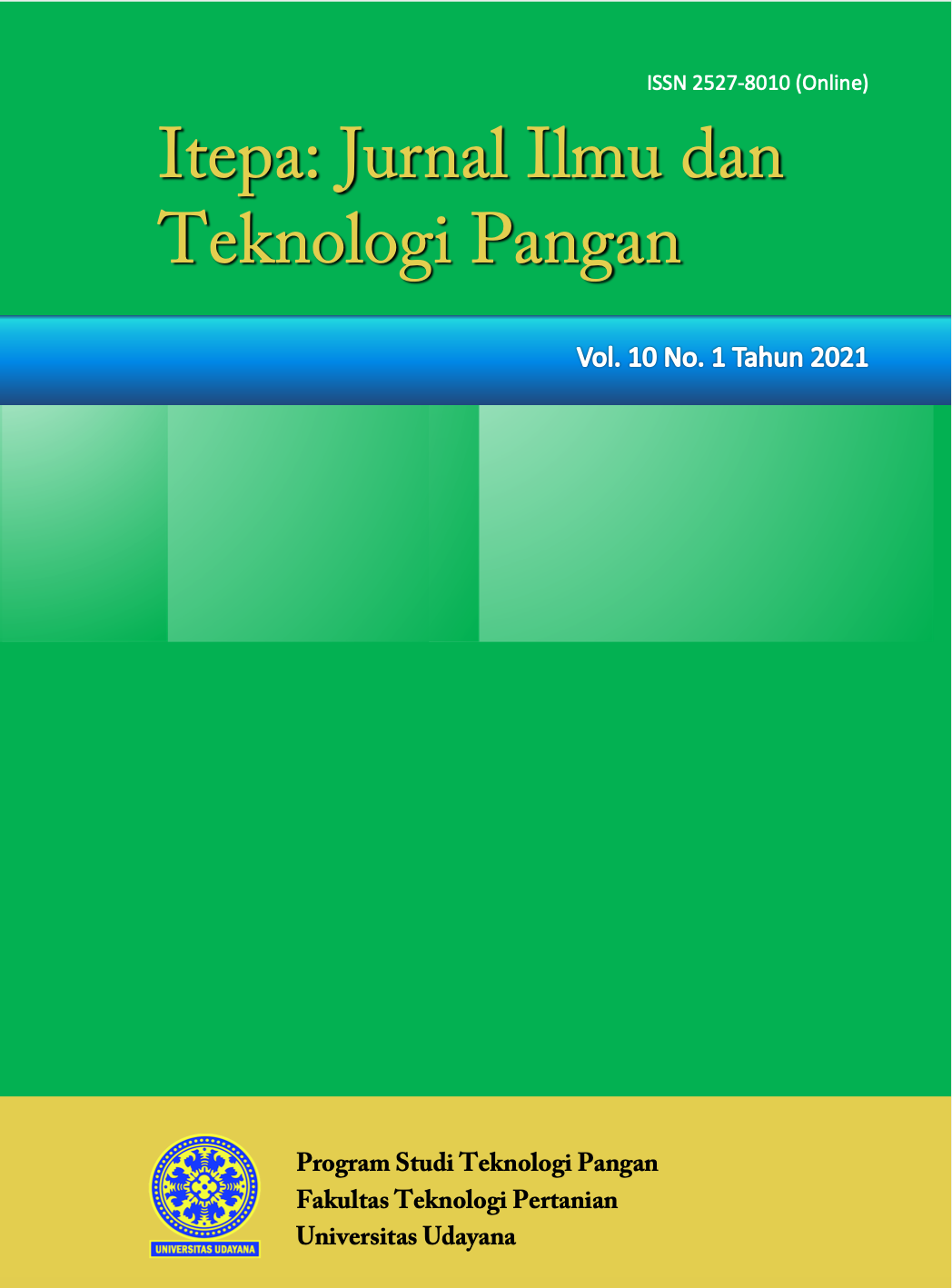Pengaruh Metode Pengolahan Terhadap Aktivitas Antioksidan Dan Karakteristik Teh Herbal Bubuk Daun Afrika (Vernonia amygdalina Delile)
Abstract
This study aims to determine the effect of processing methods on antioxidant activity and characteristics of African leaf herbal tea and find out the right processing method to get the highest antioxidant activity and the best characteristics. The Completely Randomized Design was used in this study with treatment methods which consisted of 4 levels, namely Method A (steam blanching and drying), Method B (withering and pan firing) Method C (withering and Drying) and Method D (steam blanching and pan firing). This study was repeated 4 times to obtain 16 experimental units. The data obtained were analyzed by analysis of variance and if the treatment had a significant effect it was followed by Duncan’s Multiple Range Test (DMRT). The parameters tested in this study include water content, ash content, total phenols, total flavonoids, color, antioxidant activity and sensory characteristics. The results showed that the methods of processing herbal tea powder of African leaves has a highly significant effect on water content, total phenol, total flavonoids, antioxidant activity, color, and sensory tests of color, taste, flavor and have a significant effect on overall reception and have no significant effect on ash content. Herbal tea powder of African leaves processed by method steaming and drying was the best treatment with a moisture content of 6.41%, ash content of 5.27%, total phenol of 2.4169 mgGAE/g, total flavonoids 2, 6563 mgQE/g, antioxidant activity 67.28%, color (L, a, b = 4.86; -49.07; 34.71), light green color, very distinctive aroma of African tea leaves, very bitter taste, and overall reception likes.





